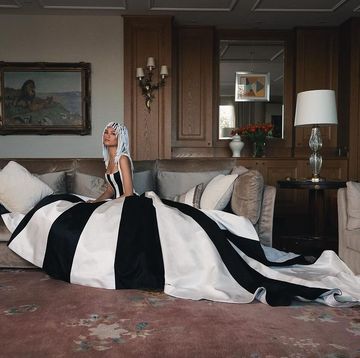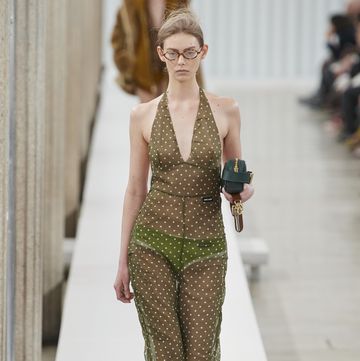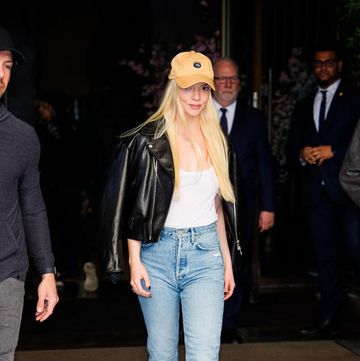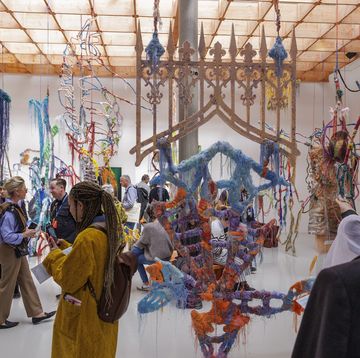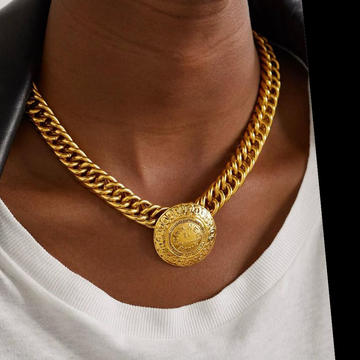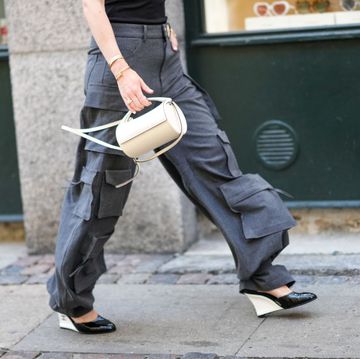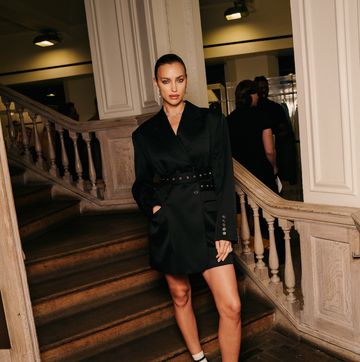Waiting in line to shake her miniscule hand (Japanese journalists bowed) I overheard Gene Krell, the international fashion director of Vogue Japan, tell her it was one of her best. I dont know about that because all the Comme des Garcons shows I have seen have been bests and there have been quite a few.
Rei Kawakubo doesnt do anything but her best. Always. You can see that she pours every molecule of her being into her art, although she doesnt see it as art at all; for her it is fashion, to be worn, cherished, thrown in the washing machine. She told me that once when I interviewed her about her collaboration with H&M.
You certainly couldnt throw these clothes in the washing machine. For one thing they wouldnt fit. These grand shapes that, instead of circling the body as normal clothes do, were flat, two dimensional like flat-packed removal boxes, the models bodies sandwiched in between, in ever more interesting prints (splodgy flowers on camouflage, giant roses, massive spots) and ever more dramatic width.
But watching Comme des Garcons is like staring at a painting the more you look, the more you see; in this case myriad themes within the theme. If I were to guess what other inspirations lurked behind this collection, I would say girl-to-teen-to-womanhood with all the naïvety, joy and disturbing growing pains that might entail.
You had the series of childlike, sweeter than sweet pastel pink flat dresses reminiscent of a childs interchangeable paper-cut-out-dollies where the models wore virginal white ankle socks with sensible pre-schooler flats. You had another series of 2D dresses rendered in sparkling red, blue or purple sequins the teenage party years? You had the ominous group of models trapped inside burka-like shrouds (in, weirdly, the most joyful of printed floral fabric) their faces obscured with hoods and straps that conjured unsettling images of Guantanamo prisoners representing women trapped in domesticity? And at the end, you had the loveliest sculpted coats and dresses covered in rose buds and caped coats. Thats when the romantic classical music suddenly piped up giving the feel of a celebration, as if this rose-smothered congregation had suddenly arrived at the most bizarre wedding. The entire show up until that point had been conducted in silence.
I doubt any of these synopses is correct. But thats what Rei Kawakubo does every six months: makes you think. And that is her irrefutable magic.

